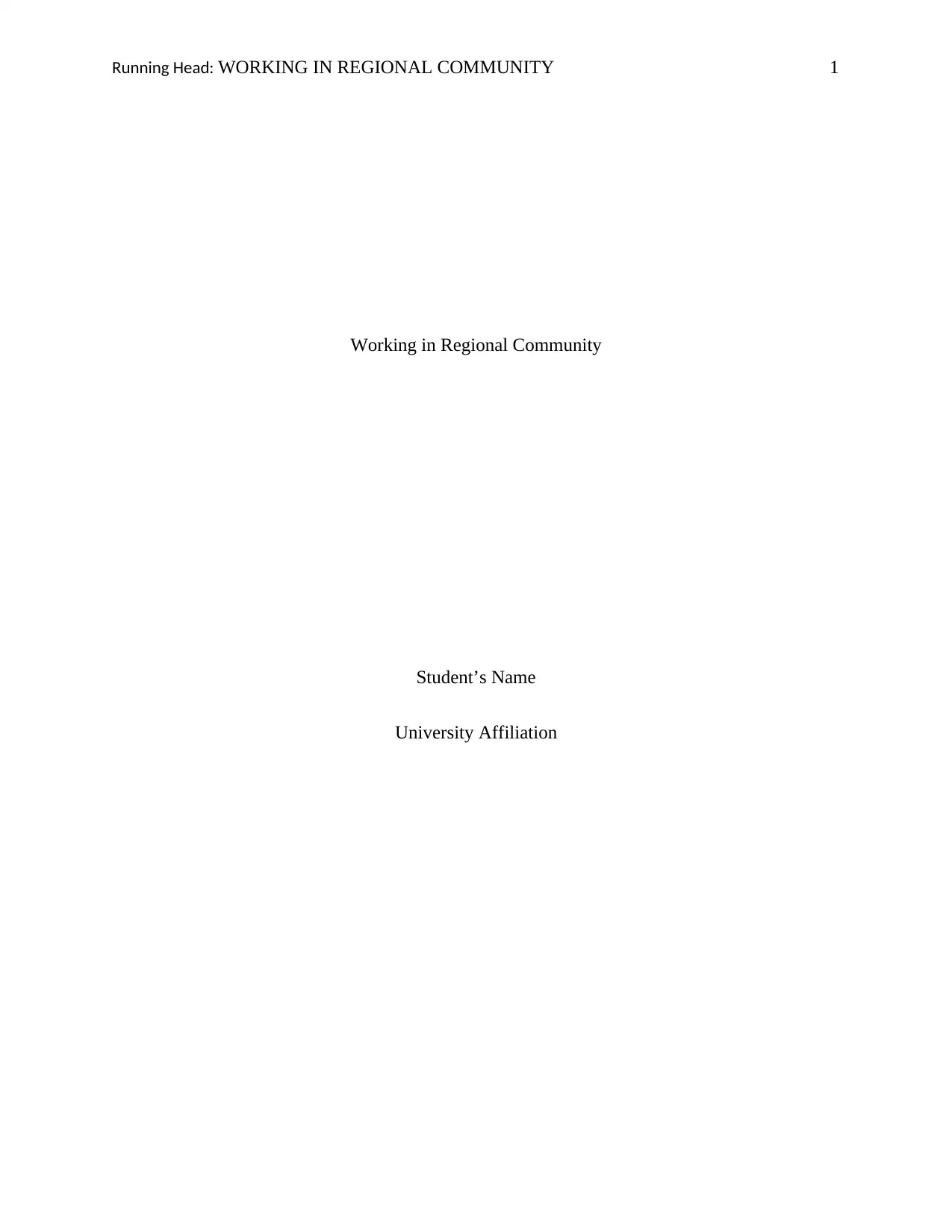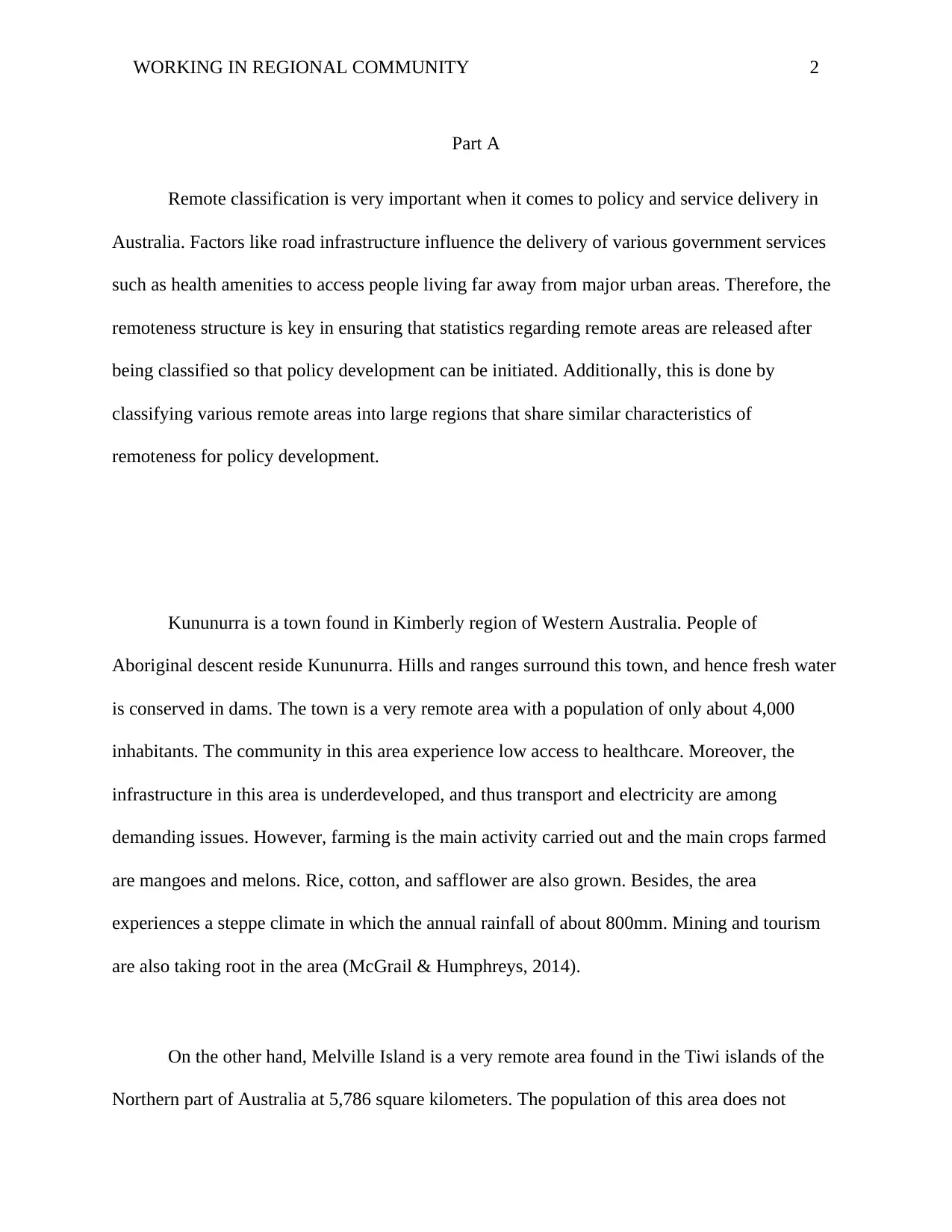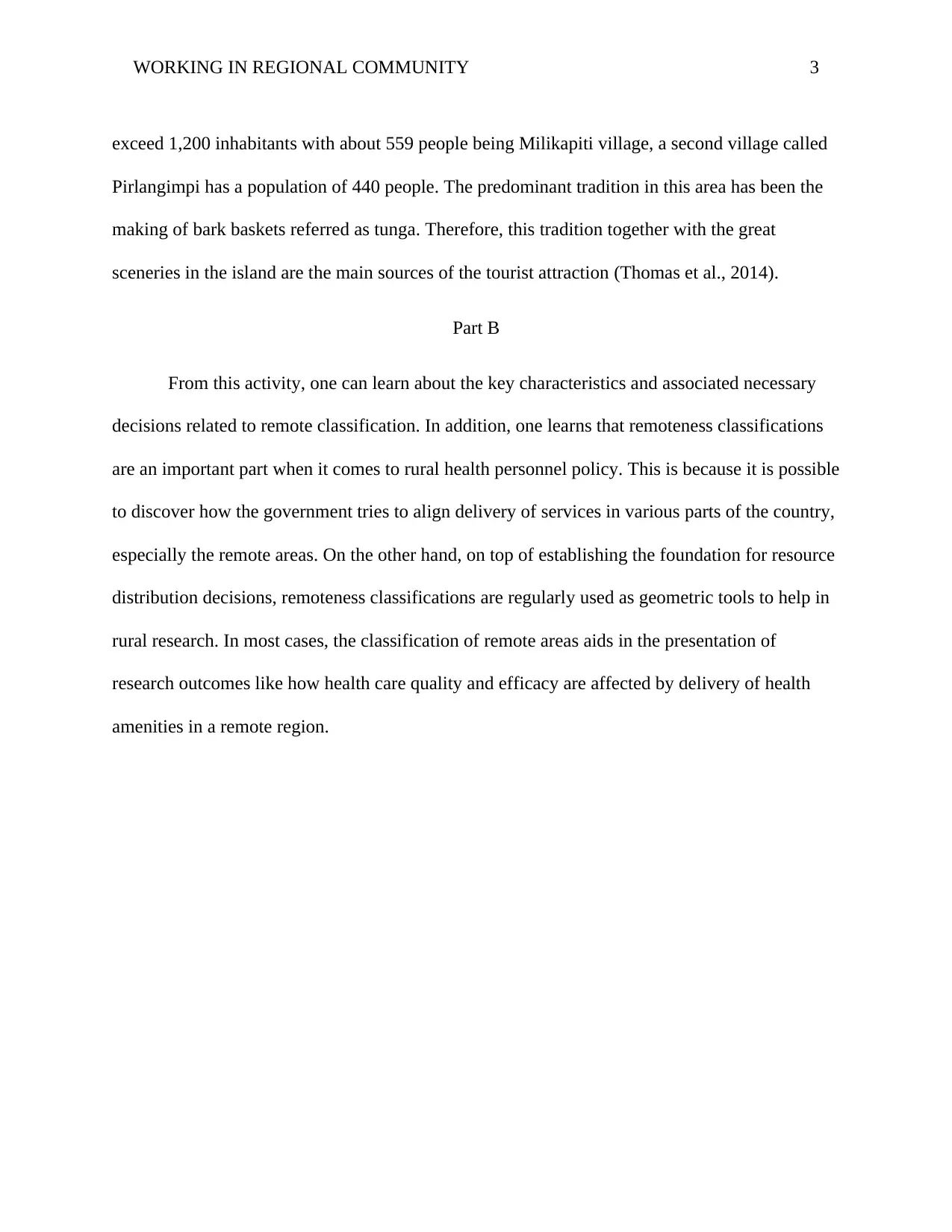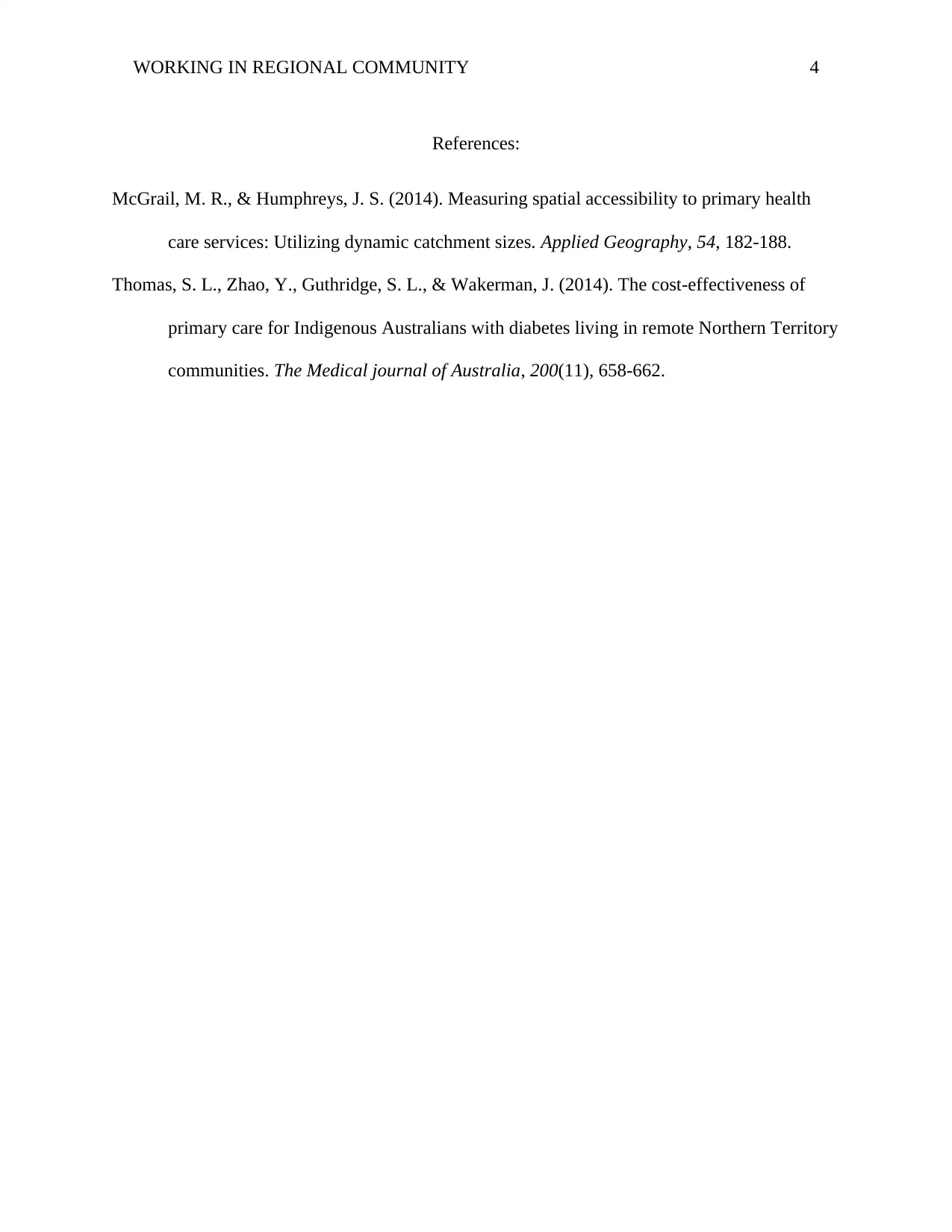Remote Community Analysis: Kununurra and Melville Island
VerifiedAdded on 2020/03/16
|4
|593
|42
Report
AI Summary
This report provides an analysis of two remote communities in Australia: Kununurra and Melville Island. It explores the geographical characteristics, infrastructure, and primary economic activities of each area. Kununurra, located in Western Australia, is characterized by its remote location, low population, and agricultural focus on mangoes, melons, and other crops, with a developing tourism sector. Melville Island, part of the Tiwi Islands, is distinguished by its unique culture, including the tradition of bark basket making, and its scenic beauty, which attracts tourism. The report also discusses the importance of remote classifications for policy and service delivery, particularly in healthcare, highlighting how these classifications influence resource allocation and research outcomes related to health service efficacy in remote regions. The report references key studies that provide insights into the challenges and opportunities of delivering services to remote communities.
1 out of 4










![[object Object]](/_next/static/media/star-bottom.7253800d.svg)